| Umělec 1998/2 >> Meretrix & Prostibulum | Просмотр всех номеров | ||||||||||||
|
|||||||||||||
Meretrix & ProstibulumUmělec 1998/201.02.1998 Maria Katkova | moscow | en cs |
|||||||||||||
|
Every art process branded with certain verbosity creates a series of dark mythologies, phantom legends and very improbable stories. Radical art of the 20th Century with its concentrated form on “the art of action“ awards this phenomenon amazing speed of creation when two witnesses of the same performance easily differ in their opinion on participating material (fixed) objects. Immediate participants of the performance quickly become legendary personalities proportionate to the level of the scandalous character of the action they carry out. Oleg Kulik and Alexandr Brener (hereafter referred to as OK and AB) are well-known and scandalous enough figures of 1992-97 Moscow and they fully comply with the principles written about the legendary G. C. Chesterton: “Legends are created by the people, history is written by one single fool“, and since I do not consider myself to be part of either of the categories, I will boldly write a few notes on the legends surrounding the history of these two rare fools.
Their oldest predecessors (in the confines of this century), the Dada, consider a scandal to be their creative method. In commentary to his novel A Good Apostle after the break-up of the group in 1922, Phillippe Soupault wrote: “Why shouldn’t we admit after all that we just love scandals? Inherent in them is a certain braveness, a certain cowardice,“ and mainly a sure road to unsure fame. Speaking of the Dada actions as pubescent period of contemporary art, and Neo-Dada as a neo-infantile strategy of the 60‘s artists, Barbara Rose could hardly predict the program resoluteness of this ephemeral strategy. Artistic infancy which lasts in time and is situated in a marginal space deserves more than anything else an analysis according to the terms of psychoanalysis, as its critical research will place its desperate representatives into the uncomfortable position of promoters of old practices and unfashionable manifestos. Russian philosopher Vladimir Bibikhin is correct when he writes that “artistic languages do not occupy dreamy heights. The elitist style of refined literature, avant-garde art and recent scientific theories ages faster than their authors.“ (Language of Philosphy, Put, iss. 3, pp. 71-72) OK and AB are runner-ups for the old practice of performances who attempt to overcome the evolution gap in Russian art within the limits of their artistic gesture but in the past five years they have managed to waste reserves of innovation and society’s attention. “Curiosity - Document of a Fool“ (V. Todorov) ceased to be a legal passport for their artistic exercises, rid of the stamp of interest of accidental passers-by as well as the involved community. Two terms of Roman Law representing two types of sexual services have not appeared in the title of this text by mere accident. The first is more suitable to the picture of AB while the latter is closer to OK, a less dramatic figure of the art community, who successfully camouflages reality. The radical thinker and artist Anatoly Osmolovsky defined AB most precisely: “Alexandr Brener is a whore who walks by itself“ (Khudozhesveny Zhurnal, iss. 2, 1993). In context of this claim, OK assumes an undoubtedly more comfortable position: in all phases of his development he was supported by affluent personalities (banker Vladimir Ovcharenko, wife and speechwriter Lyudmila Bredikhina, gallerist Marat Gelman and curator Viktor Miziano). The diverse ethos of Moscow’s artistic brood seemingly controlled by by the institute of the elders - the 80‘s conceptualists - admitted both OK and AB who have, however, fought aggressively for their place at the camp-fire, parasiting on the established infrastructure of artistic wealfare. „OK - a figure who emerged from nothing“ (A. Kovalyov, V. Miziano, Khudozhestvenny Zhurnal, iss. 1, 1993) recounts all important facts in his 1980‘s biography which preceded his emergence. “In 1981 in the village of Dubrovky, Selizharovsky Region, Kalinin Province, I lost my virginity. The following decade was... a time of farewell to virginity and of losing my illusions. Nothing positive happened in my life... except for meeting Lyudmila Bredikhina. I suffered from failure, disenchantment, poverty and disability. My move to Moscow changed nothing at all - all around I saw the same disenchantment, poverty and disability. Things changed when I met Vladimir Ovcharenko but that’s already the 90‘s...“ (Khudozhestveny Zhurnal, iss. 5, 1994) According to his further testimony, the 90‘s were in the name of lust for power and money - unabsolute and insufficient but still a typical aspect of Russia. Society that views the artist as someone who does not deserve respect from even a child does not allow him to express an important action (Barbara Rose) thus inevitably provoking in him gesture of cave aggression which forms a rather ugly perception of an artistic personality. In contrast to romantic aureole of an announcer of thoughts and hopes to blind mankind of the past centuries, contemporary hypostasis of an artist appears like an ugly, rarely nice and internally complex and annoyingly mercantile, mentally ill creature living among us. There is nothing higher in him for he cynically offends reality, he never reaches or even strives for the height of the spirit. The chronologically parallel (1992) beginning of OK and AB performances coincided with the period when classical performance in Eastern Europe and in works of marginal artists was revised. The eternal delay of Russia, subsconscious cult of foolishness and rise of general prostituting of people inevitably accompanying the transformation of social-economic formation, secured the artists’ temporary success. It is worth noting here that theoretical (literary) motivation of both artists, a fact so important for local context, represents a peculiar complex of texts whose analysis would reveal a strange rule of law. The “zoophrenic“ ideas of OK are for the most part formulated and lexically inserted into reasonable texts by his wife and art critic. They bear all signs of obvious intellectual discernment, signs which are identical to retardness of the immediate author who subjects Darwinism to his own editing and counts on the fact that “a man suppresses an animal inside during his entire existence on Earth“. (OK) Without taking the effort to become acquianted with contemporary concepts of anthropology, OK represents the kind of danger of which Paul Feierabend wrote: “An artist or a scientist who claims to have found one single reality is a tyrant whom we should keep good distance from.“ (Art as a Product of Nature, Khudozhestveny Zhurnal, iss. 9, 1996, p. 69) OK’s regrettable political excersises (an election society called The Party of Animals) are close to the legend of Zhirinovski’s involvement who is kept in the role of a trained duck and whose false decor takes the simple-minded drake away from real danger. It is noteworthy that ultimately OK had to admit that his artistic product is not really commercially that interesting for the West and it is not interesting even in the homeland of the author (Khudozhestveny Zhurnal, iss. 9, 1996) despite the wide publicity which provides an advantage in the West but means nothing in Russia. OK’s contacts with current critique may serve as original example of local context where Kulik’s critical priorities are limited by the circle of friendly writers who occasionally appreciate his actions. Even more comical is situation of his wife about whom he writes with the grace of a bear: “With special appreciation to critic Lyudmila Bredikhina without whom my (!) concept of clarity and the forming of my ‚zoophrenic‘ ideas would be impossible“. (Khudozhestveny Zhurnal, iss. 11, 1996) In the same article OK has the cheek to critically contemplate criticism and contemporary art: firstly he compiles and repeats other people’s words, secondly he attempts to formulate his own, obviously erroneous opinion. One surprisingly Freudian comment of OK sheds light on his relation to the product of knowledge - “as soon as you start to think about something, you hopelessly stay behind the times“ (Khudozhestvenny Zhurnal, iss. 11, 1996). He is naive to think that he who does not abound in mental apparatus will be eternally hip like „a political animal“. OK entered the land of insanity granted to him by society by accepting various images of artistic foolishness. In a discussion, entitled “Political indentification. Battle with insanity“ (Khudozhestvenny Zhurnal, iss. 11), OK revealed himself as a real animal with unclear but a prior low-level mental process and thus his actions seem to be a hopeless escapade of an aging punker materializing the slogan, “No Future“, future which will not be suitable for a being with limited mental capacity in a society of new ecology, crowded with the 20th-century human race. AB, who arrived to the capital of defeated empire as a provincial meretrix, appears as a weak yet still reflecting hetera and occupied an area of artistic sexuality less inhabited with competition. „I, Alexandr Brener, reached a great breakthrough in post Koons art on February 19, 1994. Under the Pushkin statue on Pushkin Square in Moscow, I met with my wife Lyudmila who came to see me from Israel. Under this statue I asked her to carry out an act of love with me. I did not succed as my member did not stand up of which I informed the gathered crowd by shouting: “It doesn’t stand!“ Who else in our contemporary art culture may provide an example of such absolute statement.“ (Khudozhestvenny Zhurnal, iss. 4, 1994) The famous analysis of AB’s texts and actions reveals, firstly that Brener’s IQ is no doubt higher than the analogic power of OK and if we carried out such testing, we could find out exactly what makes the two different. The high level of AB’s mental sphere allows him to compile philosophical opinions of contemporary artists in an awful way and twist them into his own verbal speculations while OK is left to use rugged manifestations outside intellectual editing. AB and Kulik are erroneous interpreters of Darwinism, and has the cheek to claim the status of a philosopher of the school of his own sociology while calling all intelligence “pitiful degenerates“ and himself a “forbidden personality“ in a system of governmental oppression who is the only worthwhile product of society. From Brener’s view, society suffers from an obvious crisis of overproduction of artistic goods, famous personalities, spacial symbols and articulated opinions. He, as a real megalomaniac, is therefore chosen to brand them with the magic of his own presence of mind and carry out an act of their violation. While seemingly successful in its elementar positions, the drama of Brener’s strategy is, however veiled in a failed voice of principal participants of this performance. The place - Earth-monster of sexual maturity, time - when everybody is ignorant to art process as a whole, the performer - cowardly countryman who lacks the hard foundations for such pathetic gestures for which reason he hysterically runs away from the artistic playground of the city to the jail of a little country. Microscopic credit lines of books inevitably dissolve in the torrent of new images of artistic graphomania, newspapers grow out of age but memories of his neurotic attacks and hairy ass do not excite even his greatest admirers. Brener’s screamings will never become Ginsberg’s Howl. Statistics prove that meretrix & prestibulum are as unproductive spheres of activity as radical artistic gestures. The first, however, realize their own problems and gradually collect cash, while the latter pamper inconvertible dreams of eternity.
01.02.1998
Рекомендуемые статьи
|
|||||||||||||
|
04.02.2020 10:17
Letošní 50. ročník Art Basel přilákal celkem 93 000 návštěvníků a sběratelů z 80 zemí světa. 290 prémiových galerií představilo umělecká díla od počátku 20. století až po současnost. Hlavní sektor přehlídky, tradičně v prvním patře výstavního prostoru, představil 232 předních galerií z celého světa nabízející umění nejvyšší kvality. Veletrh ukázal vzestupný trend prodeje prostřednictvím galerií jak soukromým sbírkám, tak i institucím. Kromě hlavního veletrhu stály za návštěvu i ty přidružené: Volta, Liste a Photo Basel, k tomu doprovodné programy a výstavy v místních institucích, které kvalitou daleko přesahují hranice města tj. Kunsthalle Basel, Kunstmuseum, Tinguely muzeum nebo Fondation Beyeler.
|








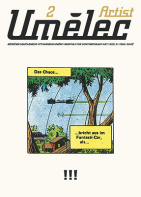














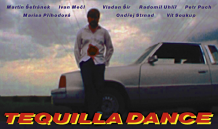




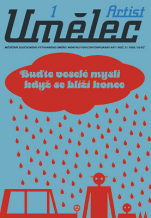
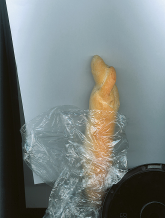
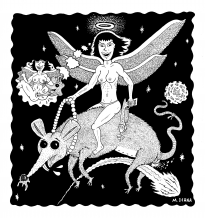
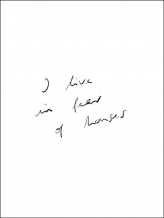


 New book by I.M.Jirous in English at our online bookshop.
New book by I.M.Jirous in English at our online bookshop.
Комментарии
Статья не была прокомментированаДобавить новый комментарий